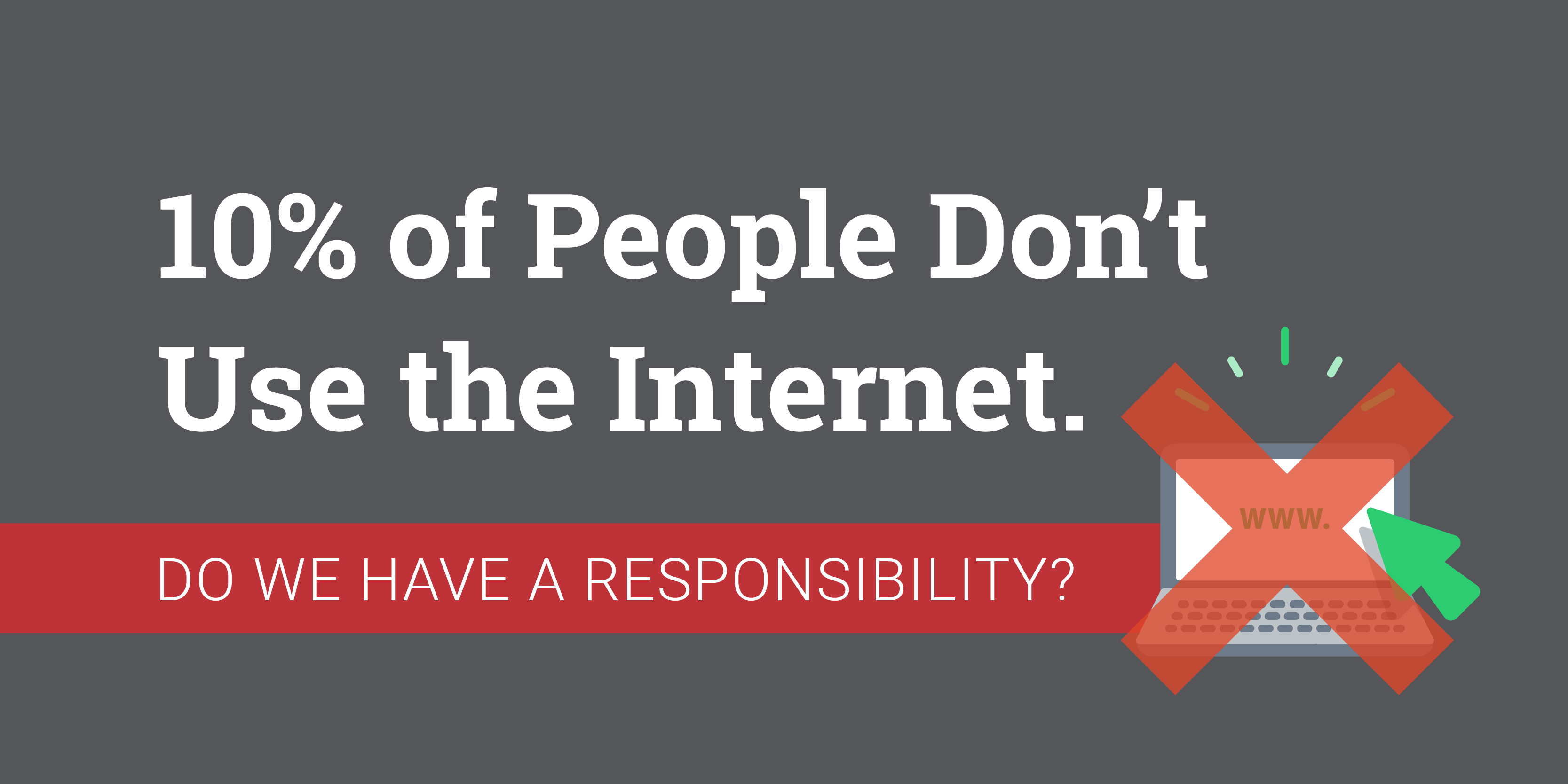
In my profession, running a digital marketing agency, it’s hard to imagine a life without the Internet.
For most of us, going online is part of our daily lives. It’s how we connect with friends and family, shop, get our news, pay our bills, go to school and more. eMarketer reported that American adults are expected to spend an average of 3 hours and 35 minutes on mobile devices per day in 2019.
Younger people, specifically Generation Z average much higher. In fact, a recent Pew Research study reported that 45% of American teens said that they’re online ‘almost constantly’.
Still, despite government and social service programs, 10% of U.S. adults still don’t use the Internet. So, who are these people and should we as a digital agency, have any responsibilities here? Should we take this into account when we plan and execute marketing strategies? Should we devise strategies that work to breakdown barriers?
According to a Pew Research study, people who don’t use the Internet are associated with specific demographics including; age, race, geographic location, household income, and education.
Here are some of the most relevant facts about people who don’t use the Internet:
- Age correlates with internet use — older generations are less likely to be online.
- They make less than $30,000 per year.
- They have less than a high school education.
- They live in rural areas.
In short, older people and people with a lower income are less likely to have access to the Internet.
Cost is undoubtedly the biggest obstacle when it comes to accessibility, but, there are other factors too. Some people don’t see any value using the Internet, and others think they are “too old” to learn new things.
While we can’t necessarily change a person’s view of the Internet, we can take steps that impact issues with accessibility or feelings of being “too old to learn.”
Here are some other ways we can tackle accessibility head-on.
- Accessibility related to cost is complicated and hinges on Net Neutrality, as well as government and social services programs. As we move closer to the 2020 presidential election, it’s critical that we understand the candidate views on Net Neutrality. Not sure how Net Neutrality would affect you? Read our post on it here.
- As marketers, we need to remember that not everyone has access to the Internet. This is especially true for older audiences. If your audience is aging, it’s important to also use traditional ways like printed collateral, direct mail, radio, and TV advertising to reach them.
- If your audience is aging, make sure your user experience is free from friction. Don’t make navigating your site challenging. If something is clickable, make it obvious. Offer the ability to resize the text, limit the need for scrolling.
- When you’re given the opportunity to help someone who doesn’t regularly use the Internet, be kind and try to put yourself in their position. We all know what it’s like to feel uncomfortable with something that we don’t quite understand. Be patient and try to be grateful that you can be there for someone who needs your help.